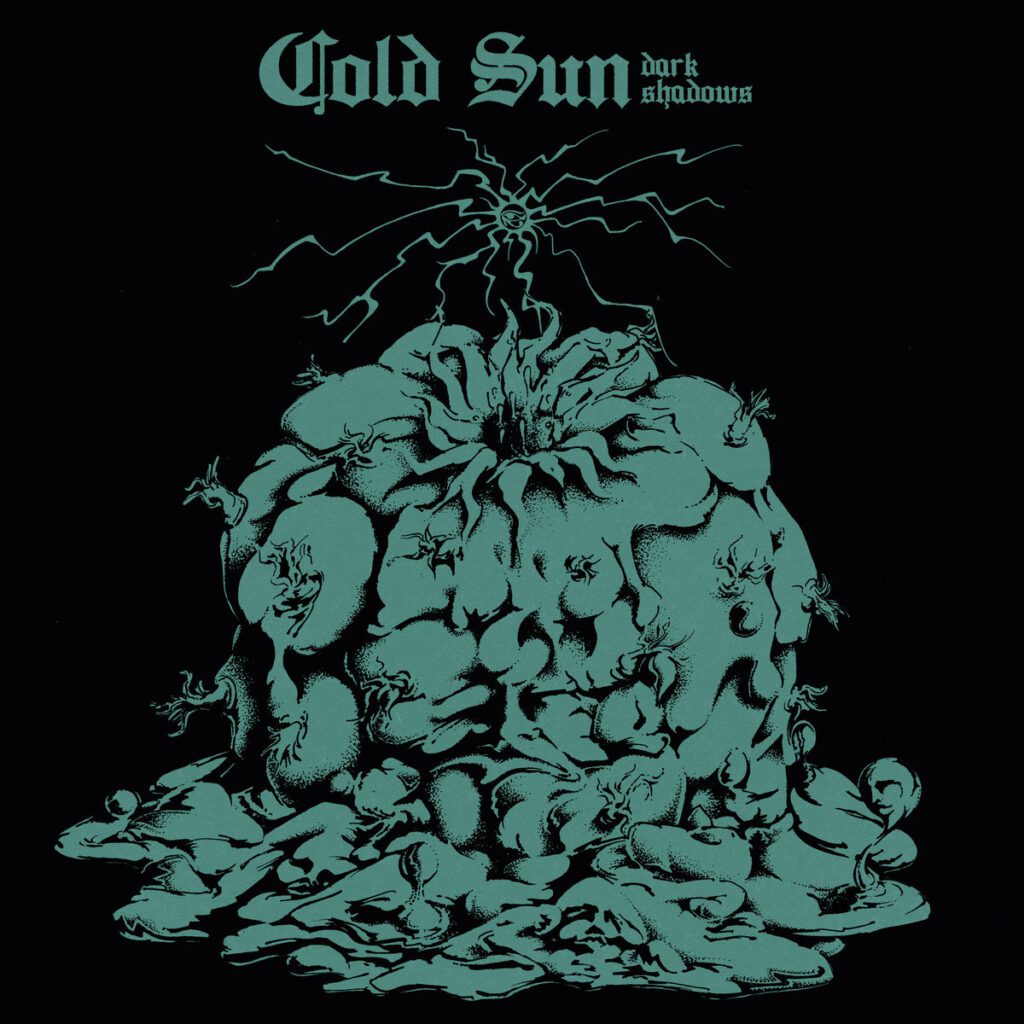In the annals of lost rock records, Dark Shadows by Cold Sun ranks high. Recorded in 1970, the LP’s stature is wholly deserved, with nary a speck of hype attached to the album’s reputation. This is especially impressive given that psychedelia is the style. However, this Austin, TX-based unit’s intent was serious and their sound dark and distinctive through the use of an electric autoharp. Production ingenuity seals the deal. The record was reissued on vinyl in 1990, but in an edition so minuscule that hardly anybody heard it. A 2008 release suffered from botched mastering. Guerssen Records’ definitive 2024 vinyl pressing has sold quickly, with a few copies left in stores. CD and digital is still available.
The Cold Sun story is told very well in the Guerssen release’s liner essay by Ezra Lesser, so I will truncate to the relevant specifics. In the wilds of Texas in the late 1960s, the band Cauldron morphed into Amethyst. Alongside guitarist Tom McGarrigle, the main songwriter and creative catalyst was Billy Bill Miller, later of Bleib Alien and Roky Erickson’s backing band The Aliens.
Members of the 13th Floor Elevators and The Lost and Found briefly made the scene, but with Mike Waugh and Hugh Patton joining on bass and drums respectively, Amethyst’s core lineup was secured. Changing their name to The Daily Planet, then Dark Shadows and finally Cold Sun, they attracted the interest of the local Sonobeat label and recorded an album-length demo with its owner-operator Bill Josey Sr.; he’d previously thrusted Johnny Winter into the clutches of Columbia Records. The shopped-around demo had no takers and laid dormant for decades as Miller had second thoughts on its worth.
Fueled by mescaline rather than LSD, Dark Shadows’ psychedelic comportment is appropriately sunbaked and with a lack of bogus formal flowerings. The tripping is legit. At the same time, the visions, particularly lyrical, are far out enough to give the LP a private press vibe that surely would’ve scared off the squares at Columbia or any other major label of the period, for that matter.
“You have seen the eyes of the gecko/staring out watching from the crack in the wall.” That’s the first two lines of opener “South Texas.” What’s crucial is the edgy musical atmosphere that accompanies the words, cultivating an air of menace (intensified on repeated listens) and steering far wide of calculated goofiness.
Cold Sun’s sound is natural and fits right into the ’60s Texas psych milieu (the Elevators, Lost and Found, The Red Crayola, Bubble Puppy, The Conqueroo, The Golden Dawn) without coming off as derivative of any other band on the scene. Of course, comparisons to the Elevators are tempting, in part due to the Miller connection, and also because of the electric autoharp and how it helped Cold Sun to stand out in a manner similar to Elevator Tommy Hall’s electric jug.
The reality is that Hall’s jug, once identified, sounds like an electric jug. Miller’s autoharp sometimes sounds like a guitar and at other moments like a keyboard, this sonic range elevating the songs, which are already above average. Cold Sun’s foundation is garage rock, an impression that’s intensified by McGarrigle’s fuzz guitar.
If the fuzz guitar dates them this actually adds to the appeal, and also helps to offset Miller’s creative dominance a bit. Cold Sun’s dark image is enhanced by descriptions of Miller as a black-clad proto-Goth, though this also inspires thoughts of The Count Five and their Dracula capes. More interesting is that “See What You Cause” has a more than passing resemblance to The Velvet Underground (I also hear fleeting similarities to Dylan and Love throughout the set).
Cold Sun makes a quick positive impression with a record that is still quite a grower. The lasting impact relates less to the mood they can conjure and more to the ability to assemble a whole LP’s worth of solid material. They could also build longer songs that didn’t run out of steam. I’m not as high on Dark Shadows as some, but the album does get into the ballpark of a lost masterpiece rediscovered.
GRADED ON A CURVE:
A-
